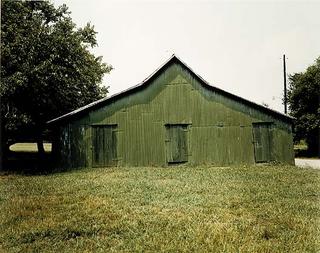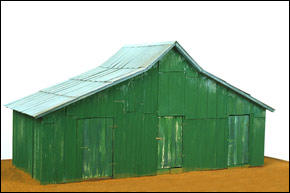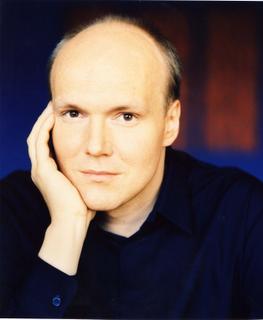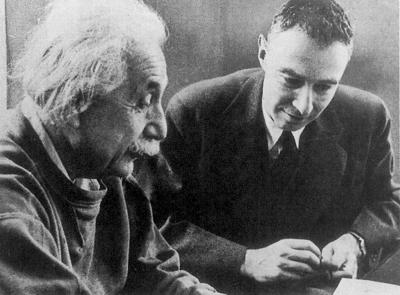Classical Month in Washington is a monthly feature that appears on the first of the month. If there are concerts you would like to see included on our schedule, send your suggestions by e-mail (praecentor at yahoo dot com). Happy listening!Saturday, October 1, 11 am
Baltimore Symphony Orchestra:
The Promise of Youth (with Kirill Gerstein, piano)
Music Center at StrathmoreSaturday, October 1, 2:30 pm
Recreating Characters in 18th-Century Opera, with Ryan Brown, Millicent Scarlett, and Tony Boutté
Opera LafayetteHillwood Museum and Gardens (4155 Linnean Avenue NW)
See the
review by Charles T. Downey (Ionarts, October 2)
Saturday, October 1, 7 pm; and Tuesday, October 4, 7:30 pm
Giuseppe Verdi,
I vespri siciliani (with soprano Maria Guleghina)
Washington National OperaKennedy Center, Opera House
See the
review by Jens F. Laurson (Ionarts, October 1)
Saturday, October 1, 7:30 pm
Washington Musica Viva (music of George Walker, Maurice Saylor, Jacques Ibert, Libby Larsen, Thomas Kerr, Charles Ives, John Work)
BannerArts Studio (4233C Howard Avenue, Kensington, Md.)
Saturday, October 1, 8 pm (preconcert lecture at 7 pm)
Axelrod Quartet (Smithsonian Chamber Music Society)
Renwick Gallery, Grand Salon
Saturday, October 1, 8 pm
National Symphony Orchestra, with cellist Truls Mørk (Hovhaness, Elgar, Dvořák)
Kennedy Center, Concert Hall
See the
review by Jens F. Laurson (Ionarts, September 30)
Sunday, October 2, 5 pm
Trefor Smith, piano [FREE, with admission to museum]
Phillips CollectionSunday, October 2, 6:30 pm
National Gallery Orchestra (with guest conductor Christopher Kendall and violinist Nicolas Kendall) [FREE]
Music by Mahler, Schoenfield, and Stravinsky
National Gallery of ArtSee the
review by Joe Banno (
Washington Post, October 4)
Sunday, October 2, 7 pm
Chanticleer,
Earth SongsGeorge Mason University Center for the Arts (Fairfax, Va.)
See the
review by Mark J. Estren (
Washington Post, October 4)
Sunday, October 2, 7:30 pm (preconcert lecture at 6:30 pm)
Axelrod Quartet (Smithsonian Chamber Music Society)
Renwick Gallery, Grand Salon
Sunday, October 2, 7:30 pm
Takács Quartet with Garrick Ohlsson, piano (Mozart, Chopin, Brahms)
Shriver Hall, Johns Hopkins University (Baltimore, Md.)
See the
review by Jens F. Laurson (Ionarts, October 4)
Sunday, October 2, 2 pm; Thursday, October 6, 7:30 pm; and Sunday, October 9, 2 pm
Trilogy (three acts from different operas, with
Mirella Freni Sylvie Valayre in
Fedora, Barbara Frittoli in
Otello, and Christiane Noll in
The Merry Widow)
Washington National OperaKennedy Center, Opera House
See the
review by Charles T. Downey (Ionarts, October 1)
Sunday, October 2, 8 pm
Guangzhou Symphony Orchestra, with Lang Lang, pianoKennedy Center, Concert Hall
See the
review by T. L. Ponick (
Washington Times, October 5)
Tuesday, October 4, 12:10 pm
Washington Bach Consort, Noontime Cantata [FREE]
Es ist nichts Gesundes an meinem Leibe (BWV 25)
Church of the Epiphany (13th and G Streets NW)
See the
review by Jens F. Laurson (Ionarts, October 5)
Tuesday, October 4, 8 pm, to Saturday, October 8, 8 pm
National Ballet of ChinaKennedy Center, Eisenhower Theater
See the
review by Sarah Kaufman (
Washington Post, October 6)
Thursday, October 6, 7 pm; Friday, October 7, 1:30 pm; Saturday, October 8, 8 pm
National Symphony Orchestra, with violinist Nikolaj Znaider (Bruch's first violin concerto and Corigliano's first symphony)
Kennedy Center, Concert Hall
See the
review by Jens F. Laurson (Ionarts, October 7)
Friday, October 7, 8 pm
Moscow Chamber OrchestraThe Barns at Wolf Trap (Fairfax, Va.)
See the
review by Mark J. Estren (
Washington Post, October 10)
Friday, October 7, 8 pm; Saturday, October 8, 5 pm and 8 pm; Sunday, October 9, 2 pm
Folger Consort (music by Josquin and Isaac)
Folger Library, Folger Elizabethan Theatre
See the
review by Charles T. Downey (Ionarts, October 8)
Friday, October 7, 8 pm
Baltimore Symphony Orchestra:
Romantic Journey on the Orient Express (with CityDance Ensemble, music by Mozart, Wagner and Strauss)
Music Center at StrathmoreSee the
review by Jens F. Laurson (Ionarts, October 9)
Saturday, October 8, 8 pm (preconcert panel at 5 pm)
Chamber Music of Tōru Takemitsu (Masatoshi Mitsumoto, artistic director and conductor) [FREE]
Library of Congress, Coolidge Auditorium
See the
review by Charles T. Downey (Ionarts, October 9)
Saturday, October 8, 8 pm
Fairfax Symphony Orchestra with Judith Ingolfsson, violinGeorge Mason University Center for the Arts (Fairfax, Va.)
See the
review by Mark J. Estren (
Washington Post, October 10)
Sunday, October 9, 5 pm
Adam Birnbaum, piano [FREE, with admission to museum]
Phillips CollectionSunday, October 9, 6:30 pm
Beaux Arts Trio (music by Martinu, Beethoven, and Schubert) [FREE]
National Gallery of ArtSee the
reviews by Charles T. Downey and Jens F. Laurson (Ionarts, October 10)
Tuesday, October 11, 7:30 pm
Gleb Ivanov, piano (Young Concert Artists Series)
Kennedy Center, Terrace Theater
See the
reviews compiled by Charles T. Downey (Ionarts, October 14)
Wednesday, October 12, 7:30 pm
Orion String Quartet with Peter Serkin, pianoKennedy Center, Terrace Theater
See the
review by Daniel Ginsberg (
Washington Post, October 14)
Thursday, October 13, 8 pm; Friday, October 14, 8 pm
Baltimore Symphony Orchestra with Barry Douglas, pianoMeyerhoff Symphony Hall (Baltimore, Md.)
See the
review by Tim Smith (
Baltimore Sun, October 15)
Thursday, October 13, 8 pm; Friday, October 14, 8 pm; Saturday, October 15, 8 pm
China National Peking Opera CompanyKennedy Center, Eisenhower Theater
See the
review by Tim Page (
Washington Post, October 15)
Thursday, October 13, 7 pm; Friday, October 14, 8 pm; Saturday, October 15, 8 pm
National Symphony Orchestra, with Pinchas Zukerman, violin and viola (Berg's violin concerto)
Kennedy Center, Concert Hall
See the
review by Jens F. Laurson (Ionarts, October 14)
Friday, October 14, 7 pm (also October 15, 4 pm, at the National Museum of the American Indian) [FREE]
Tonana (Claudia Martínez),
Mystic Songs of Ancient México (Zapotec and Maya melodies)
Cosponsored by
Programs cosponsored by
National Museum of Women in the ArtsCultural Institute of Mexico (2829 16th Street NW), for reservations call (202) 728-1675
Friday, October 14, 8 pm; Sunday, October 16, 2 pm
Verdi,
La TraviataVirginia OperaGeorge Mason University Center for the Arts (Fairfax, Va.)
See the
review by T. L. Ponick (
Washington Times, October 17)
Friday, October 14, 8 pm
Vermeer Quartet with pianist Edmund Battersby (Haydn, op. 76, no. 1; Janáček, second quartet, "Intimate Letters"; Dohnányi, Piano Quintet no. 1 in C minor, op. 1) [FREE]
Library of CongressSee the
review by Tom Huizenga (
Washington Post, October 17)
Friday, October 14, 8 pm; Saturday, October 15, 8 pm; Sunday, October 16, 8 pm
Manuel Barrueco, guitar
Dumbarton Oaks, Friends of Music ConcertsFriday, October 14, 8 pm; Saturday, October 15, 8 pm
Juana Zayas, piano
Cuban Interests Section (2630 16th Street NW)
Embassy SeriesSee the
review by Lindsay Heller (Ionarts, October 15)
Friday, October 14, 8 pm
Cypress String Quartet (Shostakovich, Cotton, Bloch, Beethoven)
Clarice Smith Performing Arts Center (College Park, Md.)
Saturday, October 15, 2 pm
Severin von Eckardstein, piano
Kennedy Center, Terrace Theater
See the
review by Jens F. Laurson (Ionarts, October 16)
Saturday, October 15, 8 pm (plus free master class at 1 pm)
Biava String Quartet, with cellist Paul Katz
Kreeger MuseumSaturday, October 15, 8 pm
Palestrina Choir (Palestrina's
Missa Ave Maria and Marian motets)
Dumbarton United Methodist Church (3133 Dumbarton Street NW)
See the
review by Joe Banno (
Washington Post, October 17)
Sunday, October 16, 2 pm
Ann Schein, piano (benefit concert)
Kennedy Center, Terrace Theater
See the
review by Tim Page (
Washington Post, October 18)
Sunday, October 16, 4 pm
Takács Quartet ("Dissonance" Quartet, Mozart viola quintet with James Dunham, and Debussy quartet)
Sponsored by the
Foundation for Advanced Education in the Sciences (Bethesda, Md.)
Concert at the Landon School's Mondzac Performing Arts Center (6101 Wilson Lane, Bethesda, Md.)
See the
review by Jens F. Laurson (Ionarts, October 17)
Sunday, October 16, 5 pm
Andrea Padova, piano [FREE, with admission to museum]
Phillips CollectionSunday, October 16, 5 pm
Concert with Ancient Greek Instruments (including a replica of the Delphi hydraulis, excavated in 1992), with a dessert reception
Corcoran Gallery of Art (in collaboration with the Embassy of Greece)
See the
review by Charles T. Downey (Ionarts, October 17)
Sunday, October 16, 6:30 pm
Rita Bouboulidi, piano (music by Beethoven, Brahms, and Schubert) [FREE]
National Gallery of ArtSee the
review by Stephen Brookes (
Washington Post, October 18)
Sunday, October 16, 7 pm
Ravi Shankar (WPAS)
Music Center at StrathmoreSee the
review by Gail Wein (
Washington Post, October 18)
Sunday, October 16, 7:30 pm
Donizetti,
La Fille du RégimentOpera Bel CantantiLa Maison FrançaiseSee the
review by Charles T. Downey (Ionarts, October 18)
Monday, October 17, 8 pm
Shanghai Symphony Orchestra featuring Tan Dun: China New WaveKennedy Center, Concert Hall
See the
review by Gail Wein (
Washington Post, October 19)
Tuesday, October 18, 7 pm
Tan Dun's Map Project and China's Endangered Music [FREE]
Freer Gallery of Art, Meyer Auditorium
Tuesday, October 18, 8 pm
Württemberg Chamber Orchestra with Arabella Steinbacher, violin (Mendelssohn, Mozart, Bruckner) [FREE]
Library of Congress, Coolidge Auditorium
See the
review by Andrew Lindemann Malone (
Washington Post, October 20)
Wednesday, October 19, 8 pm
Borodin Quartet, 60th Anniversary Tour (Borodin, Beethoven) [FREE]
Library of Congress, Coolidge Auditorium
See the
review by Charles T. Downey (Ionarts, October 21)
Friday, October 21, 7 pm
Silvana Santinelli, piano (music by Spanish-Mexican composer Rodolfo Halffter [1900-1987]) [FREE]
Cosponsored by
Programs cosponsored by
National Museum of Women in the ArtsCultural Institute of Mexico (2829 16th Street NW), for reservations call (202) 728-1675
Friday, October 21, 8 pm
Jupiter Quartet, with violist Roger Tapping (who will be playing in all of the Mozart quintets at the Corcoran this season)
Corcoran Gallery of Art, Musical Evening SeriesSee the
review by Jens F. Laurson (Ionarts, October 22)
Saturday, October 22, 8 pm
Munich Symphony Orchestra with Philippe Entremont, pianoGeorge Mason University Center for the Arts (Fairfax, Va.)
See the
review by Jens F. Laurson(Ionarts, October 25)
Saturday, October 22, 8 pm
National Philharmonic with Richard Stoltzman, clarinet (Mozart, Clarinet Concerto)
Music Center at StrathmoreSee the
review by Cecelia Porter (
Washington Post, October 24)
Saturday, October 22, 3 pm; Sunday, October 23, 6 pm; Friday, October 28, 7:30 pm; November 5 and 6, 3 pm
Humperdinck,
Hansel und GretelOpera Bel Cantanti, in various church venues
See the
review by Cecelia Porter (
Washington Post, October 24)
Saturday, October 22, 8 pm
Johann Nepomuk Hummel,
Mass in E-FlatMetropolitan Chorus with 18-member Columbia Flute Choir
Mount Olivet United Methodist Church (1500 N. Glebe Road, Arlington)
Saturday, October 22, 8:15 pm; Wednesday, October 26, 7:30 pm; Friday, October 28, 8:15 pm; Sunday, October 30, 3 pm
Verdi,
La TraviataBaltimore OperaSunday, October 23, 3 pm [FREE]
On Stage with Washington National Opera (
zarzuela and operetta excerpts)
Members of
Domingo-Cafritz Young Artists Program,
Washington National OperaRenwick Gallery, Grand Salon
Sunday, October 23, 3 pm
Washington Musica Viva (music by Scott Wheeler, Maurice Saylor, Steve Reich, and others)
Atlas Performing Arts Center (1333 H St NE)
See the
review by Andrew Lindemann Malone (
Washington Post, October 25)
Sunday, October 23, 4 pm
The Choir of Westminster Abbey (James O'Donnell, Director)
Sacred music by Bach, Byrd, Elgar, Walton and others
Washington National CathedralSee the
review by Joe Banno (
Washington Post, October 25)
Sunday, October 23, 5 pm
Verdehr Trio (piano, clarinet, violin) [FREE, with admission to museum]
Phillips CollectionSunday, October 23, 6:30 pm
Takács String Quartet (music by Haydn, Borodin, and Beethoven) [FREE]
National Gallery of ArtSee the
review by Jens F. Laurson (Ionarts, October 26)
Sunday, October 23, 7 pm
Midori, violin, and Charles Abramovic, piano (WPAS)
The Music Center at StrathmoreSee the
review by Charles T. Downey (Ionarts, October 24)
Tuesday, October 25, 12:10 pm
Palestrina Choir (Renaissance music) [FREE]
Church of the Epiphany (1317 G Street NW)
Tuesday, October 25, 7:30 pm
Camerata Nordica (WPAS)
Kennedy Center, Terrace Theater
See the
review by Jens F. Laurson (Ionarts, October 28)
Tuesday, October 25, 8 pm
Sharon Isbin, guitar, with the Zurich Chamber OrchestraMusic Center at StrathmoreWednesday, October 26, 7:30 pm
YL Male Voice Choir (from Helsinki, Finland)
Music by Sibelius, Rautavaara, Randall Thompson, Tormis, Yuasa, Kuula
St. Mark's Episcopal Church (Third and A Streets SE)
Wednesday, October 26, 8 pm
Cecilia Bartoli, mezzo-soprano (arias from Opera Proibita CD)
Kennedy Center, Concert Hall (WPAS)
See the
reviews by Charles T. Downey and Jens F. Laurson (Ionarts, October 28)
Thursday, October 27, 7:30 pm
Ying Quartet (music by Tan Dun, Debussy)
Kennedy Center, Terrace Theater
Thursday, October 27, 8 pm (open dress rehearsal, $10); Friday, October 28, 8 pm; Saturday, October 29, 8 pm
Marc Blitzstein,
Regina (conducted by Kate Tamarkin)
Benjamin T. Rome School of Music, Catholic University
Hartke Theatre (tickets: $10, $15)
Friday, October 28, 8 pm
Corigliano Quartet with Thomas Gallant, oboe, and Pedja Muzijevic, piano (Coolidge, Carter, Sallinen, Brahms)
Founder's Day Concert [FREE]
Library of Congress, Coolidge Auditorium
See the
review by Jens F. Laurson (Ionarts, October 30)
Friday, October 28, 8 pm
King's Singers and SarbandGeorge Mason University Center for the Arts (Fairfax, Va.)
Friday, October 28, 8 pm; Saturday, October 29, 8 pm; Sunday, October 30, 3 pm
Dan Hurlin,
Hiroshima Maiden (Bunraku puppet show), with music by Robert Een
Clarice Smith Performing Arts Center (College Park, Md.)
Saturday, October 29, 7 pm (also November 2 to 19)
George Gershwin,
Porgy and BessWashington National OperaKennedy Center, Opera House
Saturday, October 29, 7:30 pm
Korean Concert Society: 25th Anniversary Concert (International Sejong Soloists)
Kennedy Center, Terrace Theater
Saturday, October 29, 8 pm
Julie and David Coucheron, piano and violin (brother and sister team from Norway, they will play all three Grieg sonatas)
Residence of the Norwegian Ambassador (3401 Massachusetts Avenue NW)
Embassy SeriesSee the
review by Jens F. Laurson (Ionarts, October 30)
Saturday, October 29, 8 pm
National Philharmonic (Haydn,
Creation, with tenor John Aler)
Music Center at StrathmoreSaturday, October 29, 8 pm
Timpano et Choro - Music for Choir and Percussion (Dallapiccola, Davison, Bernstein)
Cantate Chamber SingersBradley Hills Presbyterian Church (Bethesda, Md.)
Saturday, October 29, 8 pm
The Master Chorale of Washington: Duruflé and BrubeckKennedy Center, Concert Hall
Saturday, October 29, 8:30 pm; Sunday, October 30, 7:30 pm
André-Michel Schub, piano (winner of Naumburg International Piano Competition, Avery Fisher Recital Award, and Van Cliburn International Piano Competition)
Gildenhorn/Speisman Center for the Arts,
Jewish Community Center of Greater Washington (Rockville, Md.)
Sunday, October 30, 3 pm
The Choral Arts Society of Washington: Handel's Alexander's FeastKennedy Center, Concert Hall
See the
review by Jens F. Laurson (Ionarts, November 1)
Sunday, October 30, 3 pm
Sarah E. Geller, violin, and Vladimir Valjarevic, piano (music by Schumann, Szymanowksi, Franck)
An die Musik LIVE (Baltimore, Md.)
See the
review by Charles T. Downey (Ionarts, November 2)
Sunday, October 30, 5 pm
Gerard Reuter and Gayle Martin Henry, oboe and piano [FREE, with admission to museum]
Phillips CollectionSunday, October 30, 6 pm
Puccini, Il Tabarro, and Mascagni, Cavalleria RusticanaWashington Concert OperaLisner Auditorium See the
review by Jens F. Laurson (Ionarts, November 1)
Sunday, October 30, 6:30 pm
Paul Galbraith, guitar (music by Mozart, Ravel, Bach, and Ponce) [FREE]
National Gallery of Art——»
Go to Classical Month in Washington (September).
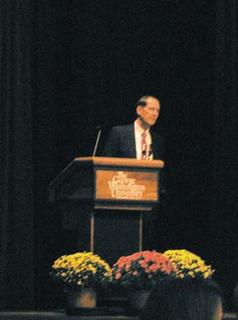 This is why you should always subscribe to museum's e-mail lists and check their Web sites regularly. As recommended here a couple weeks ago, I showed up Wednesday night at Lisner Auditorium, expecting to hear James Rosenquist give the first Clarice Smith Distinguished Lecture in American Art, hosted by the Smithsonian American Art Museum every year. (Last year, I also caught the first one, an excellent talk given by The New Yorker's art critic, Peter Schjeldahl.) Well, James Rosenquist was indisposed and could not come to Washington, so at the last minute William Christenberry, professor at the Corcoran College of Art + Design, stepped in to speak about his art. This was a nice look into the future, since Christenberry is preparing a major retrospective of his work, which will reopen the SAAM next summer.
This is why you should always subscribe to museum's e-mail lists and check their Web sites regularly. As recommended here a couple weeks ago, I showed up Wednesday night at Lisner Auditorium, expecting to hear James Rosenquist give the first Clarice Smith Distinguished Lecture in American Art, hosted by the Smithsonian American Art Museum every year. (Last year, I also caught the first one, an excellent talk given by The New Yorker's art critic, Peter Schjeldahl.) Well, James Rosenquist was indisposed and could not come to Washington, so at the last minute William Christenberry, professor at the Corcoran College of Art + Design, stepped in to speak about his art. This was a nice look into the future, since Christenberry is preparing a major retrospective of his work, which will reopen the SAAM next summer.